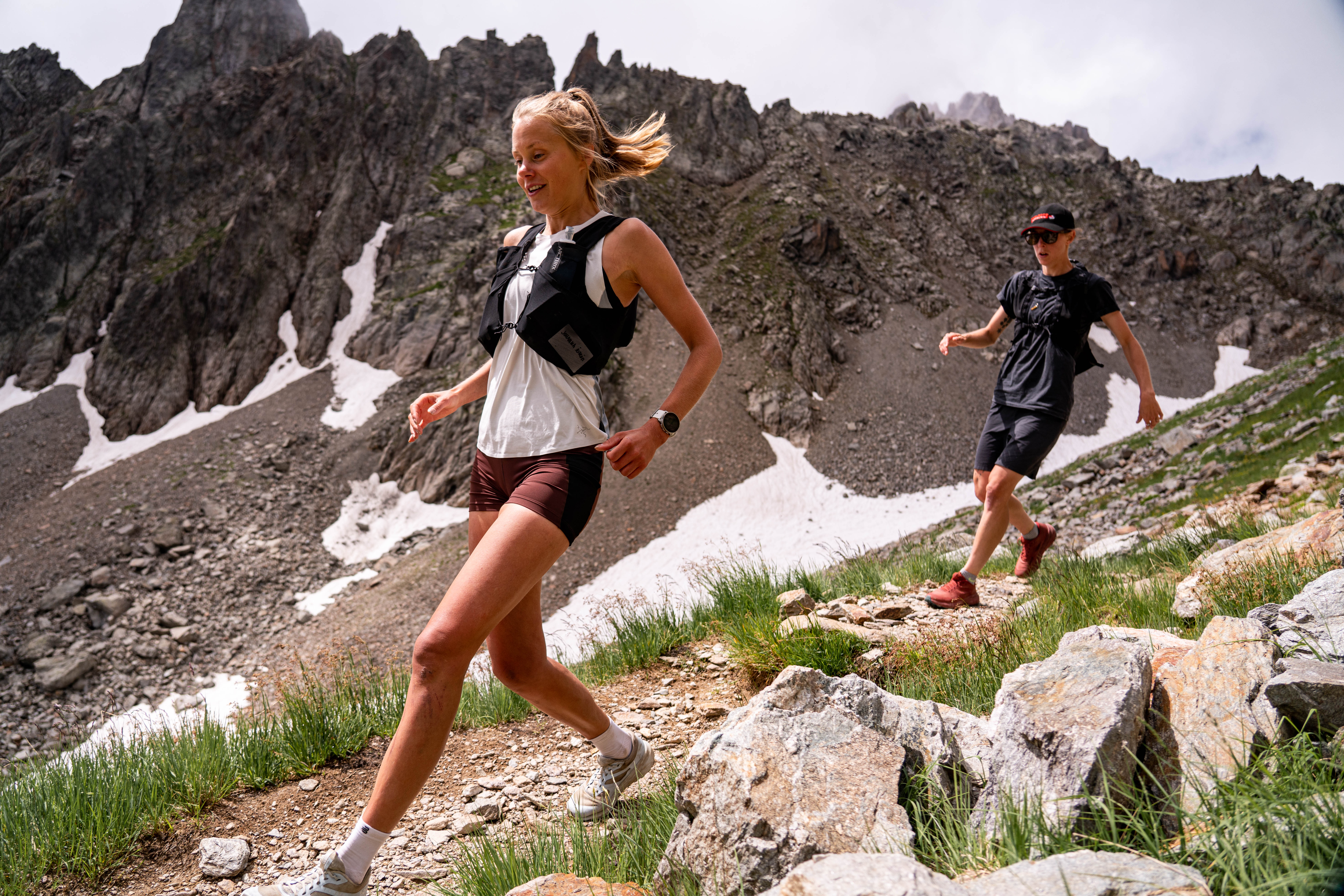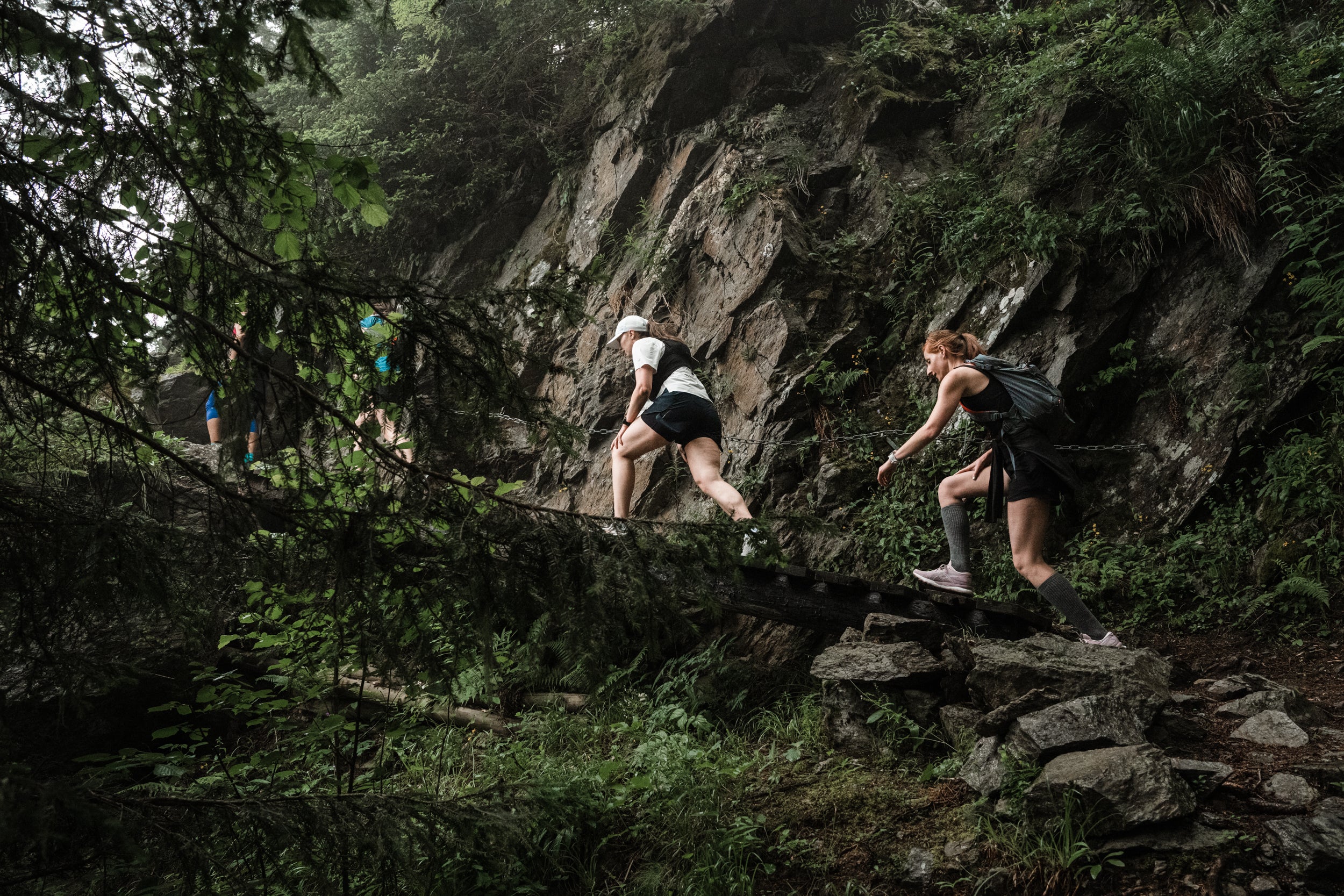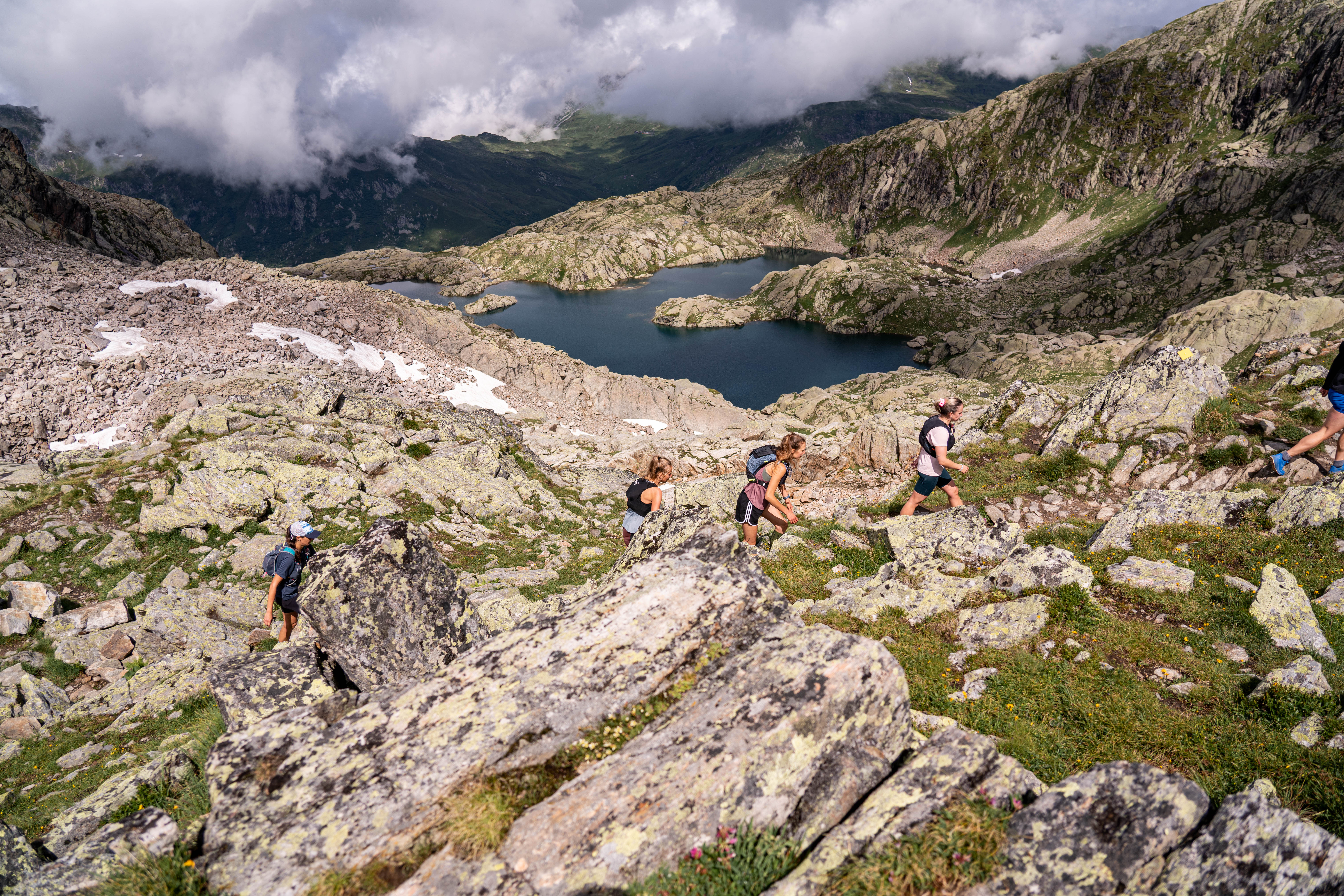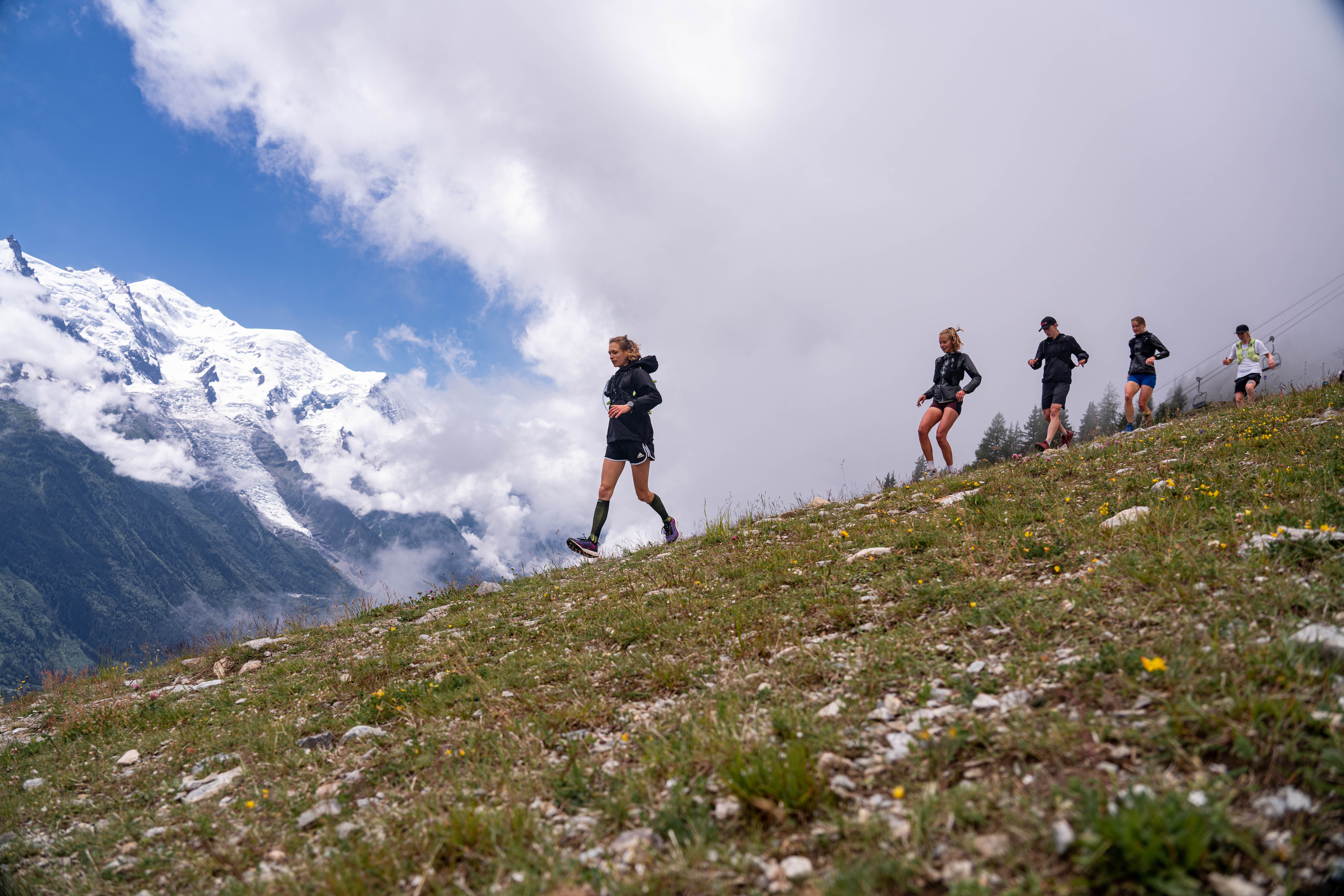Everything you need to start trail running, according to a pro
Professional trail runner Florian Reichert speaks to IndyBest about the shoes, apparel and gear that will keep you safe and comfortable when running outdoors

Part of the beauty of running outdoors is you don’t need much kit. A good pair of running shoes and some comfy clothes is all that’s required to hit the trails. It’s this simplicity that makes the sport so attractive, according to professional trail runner Florian Reichert.
Speaking to IndyBest as we tested the trails with him in Chamonix, he explained: “It’s the freedom and liberty it brings. You see a cool ridge, a tempting summit or just a nice path that sneaks through the woods – all you need is your trail running shoes and a sense of adventure to go out and explore.”
On simpler trails or paved paths, you can probably run in your normal running trainers. At IndyBest, we’re fans of the Saucony women’s tempus and New Balance 1080v13 men’s running shoe, while the Hoka challenger 7s are an excellent choice for a variety of surfaces without being a full trail running shoe.
If you’re going to step up your training and tackle more challenging terrain, it pays to invest in a good pair of trail running shoes that are designed to withstand uneven, rocky terrain, and help you stay stable in wet conditions, as well as on a variety of surfaces, whether that’s road, gravel, sand, mud or grass. When moving at speed up and down hills, you need to trust that your shoe will grip and protect as far as possible against tripping, twisting ankles or slipping.

Reichert is an ambassador for Arc’teryx and says he’d recommend the brand’s gear every time for trail running. The pro points out there are many different trail running shoes for a lot of different purposes, depending on the mileage you want to cover.
He suggests looking for more alpine-focused shoes, such as the Arc’teryx vertex, for steep and rugged terrain, while long-distance shoes with great cushioning are ideal for covering a lot of miles – his recommendation here is the Arc’teryx norvan LD3. At IndyBest we’re also big fans of the LD3 – our tester praised the “4mm lug, which gives it a confident bite in mud and on gravel” and noted “the Vibram Litebase sole feels grippy on rock”. We’d also recommend the Hoka tecton X2, which is light and grippy, or the Evadict XT8, if you’re on a budget.
Reichert adds: “The two most important things about a good trail running shoe are the fit and the sole. You want the shoe to fit almost like a sock, to avoid sliding around and to feel confident with every step. The outer-sole should have deep enough lugs for muddy terrain and a good grip on rock. The mid-sole should be durable and thick enough to keep sharp rocks from piercing your feet.”
Once your feet are sorted, you’ll need to think about clothing – and that includes a running jacket, shorts or running leggings, and a running shirt. Reichert says: “No matter whether it’s a sunny day or not, the weather can change very quickly, and it’s absolutely necessary to carry a rain jacket for comfort and emergency reasons.”

He recommends the norvan hardshell jacket from Arc’teryx, noting: “The jacket is super-light and packs very small, so you don’t even feel its weight and can easily carry it on your run. You will be very happy to have brought it when it gets cold and wet.” Other great jackets include the Asics fujitrail jacket, Columbia’s flash challenger windbreaker and the Proviz classic waterproof running jacket.
Normal running clothes or gym gear will suffice for most trail runs – IndyBest favourite brands inclue Nike, Lululemon, Under Armour, adidas and Sweaty Betty – but when you start increasing length and diffculty, it may be worth investing in more techical clothing that is particualrly light, breathable and quick-drying. Trail running often involves steep inclines followed my descents or flat roads, meaning your body temperature will likely change over the course of the trail, so, good gear will avoid you getting chilled.
You could very easily experience a range of weathers during a single run, especially if you’re out on mountain trails, so, you’ll appreciate clothing that dries quickly following rain or even snow. Have a look at brands such as 2XU, Arc’teryx, Patagonia, Salomon and adidas’s Terrex rage.
Reichert says: “On longer trail runs, you will also need a running vest to carry your rain jacket, phone, energy bars, water and maybe some gloves and a hat.” IndyBest’s top picks for running vests and backpacks include the excellent Salomon sense pro 5, the Osprey duro 1.5 running backpack and Arc’teryx’s norvan 7 vest. Our tester also really liked the very affordable Decathlon Evadict 5l trail running bag, which she described as a “practical pick if you’re after a budget unisex bag”.
Look out for a vest that has soft flasks that carry a good volume of water (two 500ml flasks is usually a good level to aim for), and pockets for holding your phone, trail snacks such as protein bars and your rain jacket.
“Another gadget every trailrunner should own is a GPS watch,” says Reichert. “With apps like Strava, it’s easy to see where other people have run (heat maps) and which trails are worth running. You can easily plan your route with an app, download it onto your watch and follow the trail without having to stop and check your phone all the time.

“It also adds a sense of security to know exactly where you are, how many kilometers you’ve run and how much climbing is left to reach a summit. A watch I really like is the Suunto vertical, because it not only shows you all the details about your run – like distance, duration and ascent/descent – but also measures your heart rate and displays your route on a map.”
The best watch for you comes down to personal preference. A lot of trail runers are loyal to Garmin (although there are plety of Apple Watch fans, too) and there’s a range of options and prices. At IndyBest, we like the mid-range Garmin 255, but it’s worth shopping around for the one that fits your budget and needs.
“Finally, I’m a big fan of poles,” Reichert adds. “Because a lot of trail runs include a fair amount of vertical running, poles can help you to use your arms to push uphill and take some stress off your knees when running downhill.
“Of course, you need to learn the right technique to use poles but, as a thumb rule, I always carry poles when my trail run has more than 1,000 vertical meters. My favourite poles are the FX.one by Leki. It’s a foldable pole that stores away easily in flat sections, has a great grip and is super light.”
Leki is the gold standard for running poles (and hiking ones), but the brand does have a price tag to match. When you’re starting out, you may want to opt for something a little more affordable or pick a lightweight walking pole – check out the offerings from Silva and Robens. Or forgo them altogether. As Reichert mentions, poles are only really necessary when you start running at height. As with so many outdoor sports, as your distance and ability increases, you can upgrade your gear. Start with some good shoes and comfy running clothes and you’ll be comfortable on most simple trails.
The 13th edition of the Arc’teryx Alpine Academy returns to Chamonix-Mont-Blanc for four days from 4-7 July 2024.
Bookmark popover
Removed from bookmarks